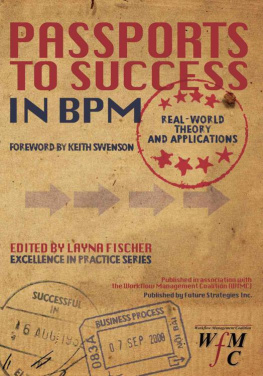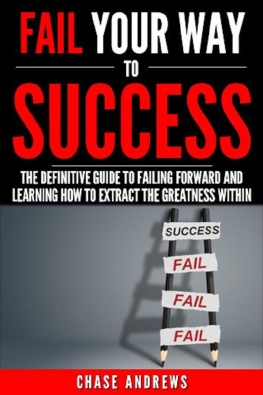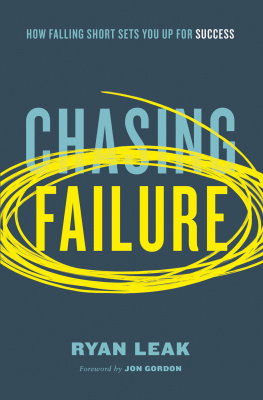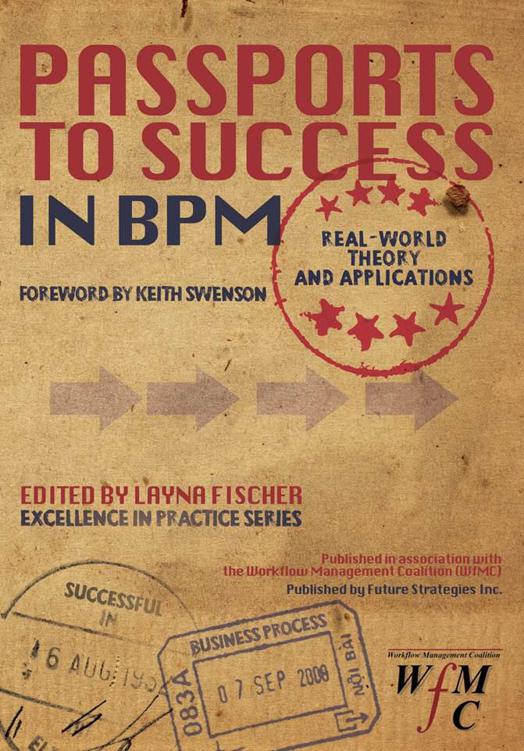
Passports to Success in BPM
Real-World, Theory and Applications
Co-authored by Nathaniel Palmer, Peter Schooff, Lloyd Dugan, Charles Farina, Pedro Robledo, Frank Kowalkowski , Prof Mark von Rosing, et al
Foreword by Keith D. Swenson
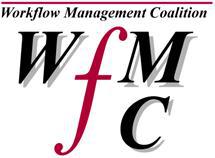
Published in association with the
Workflow Management Coalition
Edited by LAYNA FISCHER
Excellence in Practice Series
ISBN13:9780984976492 ( Buy Print Edition here )
Copyright 2014 by Future Strategies Inc.
Published by Future Strategies Inc., Book Division
3640-B3 North Federal Highway, #421, Lighthouse Point FL 33064 USA
954.782.3376 / 954.719.3746 fax
For bulk orders, resellers, academic orders and extracts, please contact the publisher.
All brand names and product names mentioned in this book are trademarks or service marks of their respective companies. Any omission or misuse should not be regarded as intent to infringe on the property of others. The Publisher recognizes and respects all marks used by companies, manufacturers and developers as a means to distinguish their products.Neither the editor, WfMC.org, the Awards sponsors, nor Future Strategies Inc., accept any responsibility or liability for loss or damage occasioned to any person or property through using the material, instructions, methods, or ideas contained herein, or acting or refraining from acting as a result of such use. The authors and the publisher expressly disclaim all implied warrantees, including merchantability or fitness for any particular purpose. There will be no duty on the authors or Publisher to correct any errors or defects in the publication or software.
All rights reserved. Manufactured in the United States of America. No part of this work covered by the copyright hereon may be reproduced or used in any form or by any meansgraphic, electronic, or mechanical, including photocopying, recording, taping, or information storage and retrieval systemswithout written permission of the publisher, except in the case of brief quotations embodied in critical articles and reviews.
TABLE OF CONTENTS
Publishers Note about Kindle graphics: We are aware that a few minor graphics in one chapter of Kindle version did not convert well to Kindle format in the older readers and we apologize. We are happy to supply you with the PDF of that chapter with original clear graphics, just let us know here: http://FutStrat.com/Passports.php (scroll down to our form to drop in your contact details, we will send it to you immediately).
Foreword by Keith Swenson, WfMC Chair
MODERN DEFINITION OF BPM
Twenty four years ago Michael Hammer published the article "Reengineering Work: Don't Automate, Obliterate" in the Harvard Business Review in which he encouraged people to eliminate needless business processes before investing time in automating them. Even then, the focus for business process management was understanding, scrutinizing, and fundamentally reworking business processes, and not to assume that the process you have is the one that you want or need, and certainly not to blindly automate it.
Since then, when the Business Process Management movement came out in the first years of the new century, the meanings attributed to the term BPM varied extensively. Some say BPM as a new kind of programming, focused entirely on automation, and server integration.
Yet others stayed true to the ideal that business process is something people do , not a program, not a programming language, and not a system for programming. There was for years significant confusion about what different vendors and practitioners really meant.
This year, a number of experts came together on line, and worked out a comprehensive definition for BPM. The following result has contributions from dozens of notable people in the field:
Business Process Management (BPM) is a discipline involving any combination of modeling, automation, execution, control, measurement and optimization of business activity flows, in support of enterprise goals, spanning systems, employees, customers and partners within and beyond the enterprise boundaries.
This definition is designed to be short enough to use regularly, without gratuitous words. There is a trade-off: a longer definition might make it clearer, and at the same time more cumbersome. Here is clarification of what we mean by these words:
BPM is a discipline ; it is a practice; it is something you do.
Business stems from the state of being busy, and it implies commercially viable and profitable work. A business exists to provide value to customers in exchange for something else of value.
Process means a flow of business activities and seeing those activities as connected toward the achievement of some business transaction. Flow is meant loosely here: the order may or may not be strictly defined.
A person doing BPM must consider a process at the scope of interrelated business activities which holistically cooperate to fulfill a business objective. This is the key difference from a functional view of business where each function might be optimized independent of the other functions.
In a complex system like a business, it is well known that local optimization of part of the system will rarely lead to good overall results. A BPM practitioner must consider the metrics of the entire system when evaluating a specific process.
Modeling means that they would identify, define, and make a representation of the complete process to support communication about the process. There is no single standard way to model, but the model must encompass the process.
Automation refers to the work that is done in advance to assure the smooth execution of the process instances. In many cases this means writing software, but it might include building machinery or even creating signage to direct participants.
Execution meaning that instances of a process are performed or enacted, which may include automated aspects. Conceptually, the process instance executes itself, following the BPM practitioners model, but unfolding independent of the BPM practitioner.
Control means that the there is some aspect of making sure that the process follows the designed course. This can be strict control and enforcement, or it might be loose control in the form of guidelines, training, and manual practices.
Measurement means that effort is taken to quantitatively determine how well the process is working in terms of serving the needs of customers.
Optimization means that the discipline of BPM is an ongoing activity which builds over time to steadily improve the measures of the process. Improvement is relative to the goals of the organization, and ultimately in terms of meeting the needs of customers.
Enterprise is used here simply to mean a business organization; any organization where people are working together to meet common goals; it does not need to be exceptionally large, and it does not need to be for profit.
Enterprise goals is included here to emphasize that BPM should be done in the context of the goals of the enterprise, and not some small part of it. This might seem a bit redundant in one sense: any improvement of a process must be an improvement in terms of the enterprise goals anything else would not be called an improvement.
Within and beyond the enterprise boundaries recognizes that the enterprise is part of a larger system. Customers are part of the business process. Their interaction, along with those of employees should be considered as part of the end-to-end interaction.
Next page
